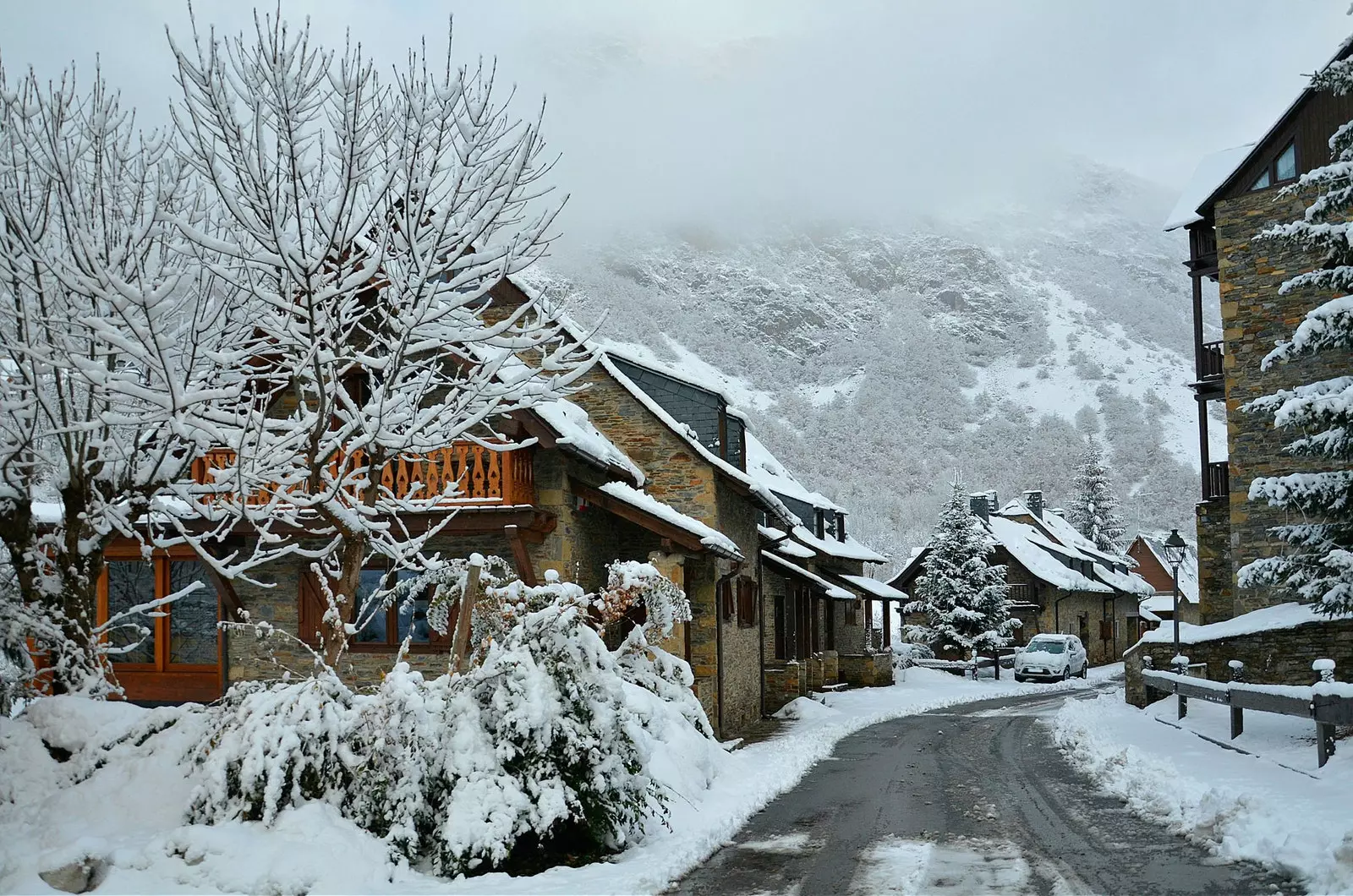
Salardú, an essential stop
Hidden among the mountains, and inserted in France as a Spanish-speaking peninsula, the Arán Valley has a unique history that goes beyond its connection with Baqueira Beret.
The ski resort, the largest in Spain, is considered by fans of alpine sports as a more than remarkable option, due to the north orientation of most of its slopes, which differentiates it from its Pyrenean neighbours.
This means that, during the winter, the Arán Valley doubles its population and welcome thousands of visitors looking for the best snow on the peninsula.
But once we take off our boots, and take the shower of rigor , the Arán Valley offers us very diverse leisure options, ranging from snowmobile routes and walks through its excellent gastronomy , until the museums erected in different churches of the valley , vestiges of a past and present full of Alpine history.
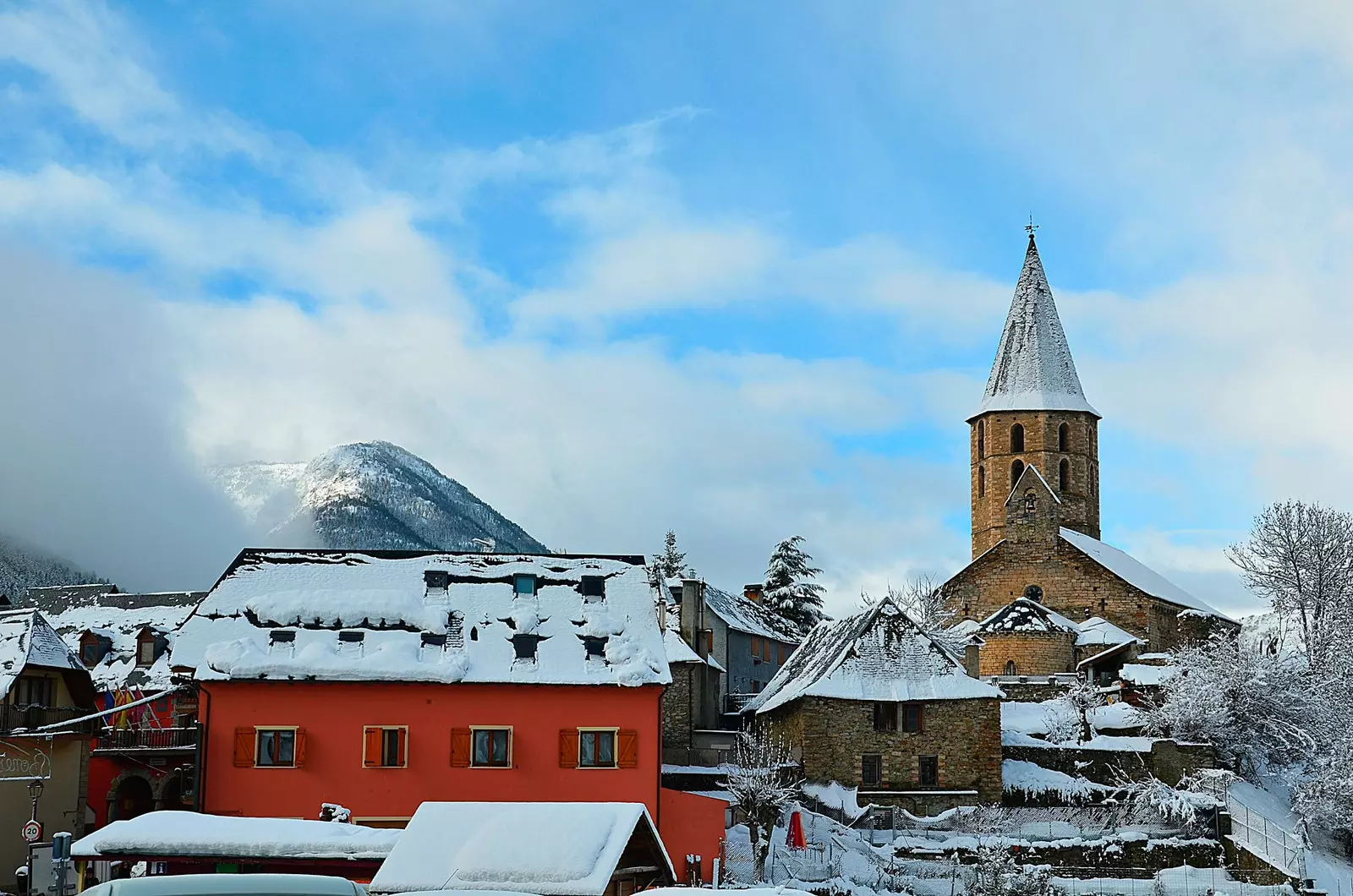
Salardu covered in snow
FOR THE MOST MOUNTAINEERS
The Aran Valley is located surrounded by peaks that exceed two thousand meters of altitude , and that, beautifully snowed during the winter, offer an incomparable setting for any outdoor activity.
From the charming town of Artíes you can enjoy a beautiful panoramic view from one of the most iconic mountains in the valley, the mountard (2,833m), whose massive pyramidal figure, touched by the crown of peaks that make up its slender summit, is impressive to say the least.
A simple route that can be done with snowshoes if the conditions allow it, will take us from Artíes to the base of Montardo in three and a half hours , finished next to the famous Refuge of the Restanca , at 2010 meters altitude.
The beauty of the alpine landscape is overwhelming: silent fir forests crossed by hundreds of crystal clear streams flank the path , while the snow creates capricious shapes on the slopes of the Sierra de la Tumeneia (2,783m).
From time to time, fat finches, redstarts, dunnocks and alpine sparrows they cross the road in fast flight towards the highest branches of the pines, and in the surroundings of the refuge it is not difficult to see the unmistakable figure of the chamois, which descend to the lowest levels when the snows cover their territories in the high mountains.
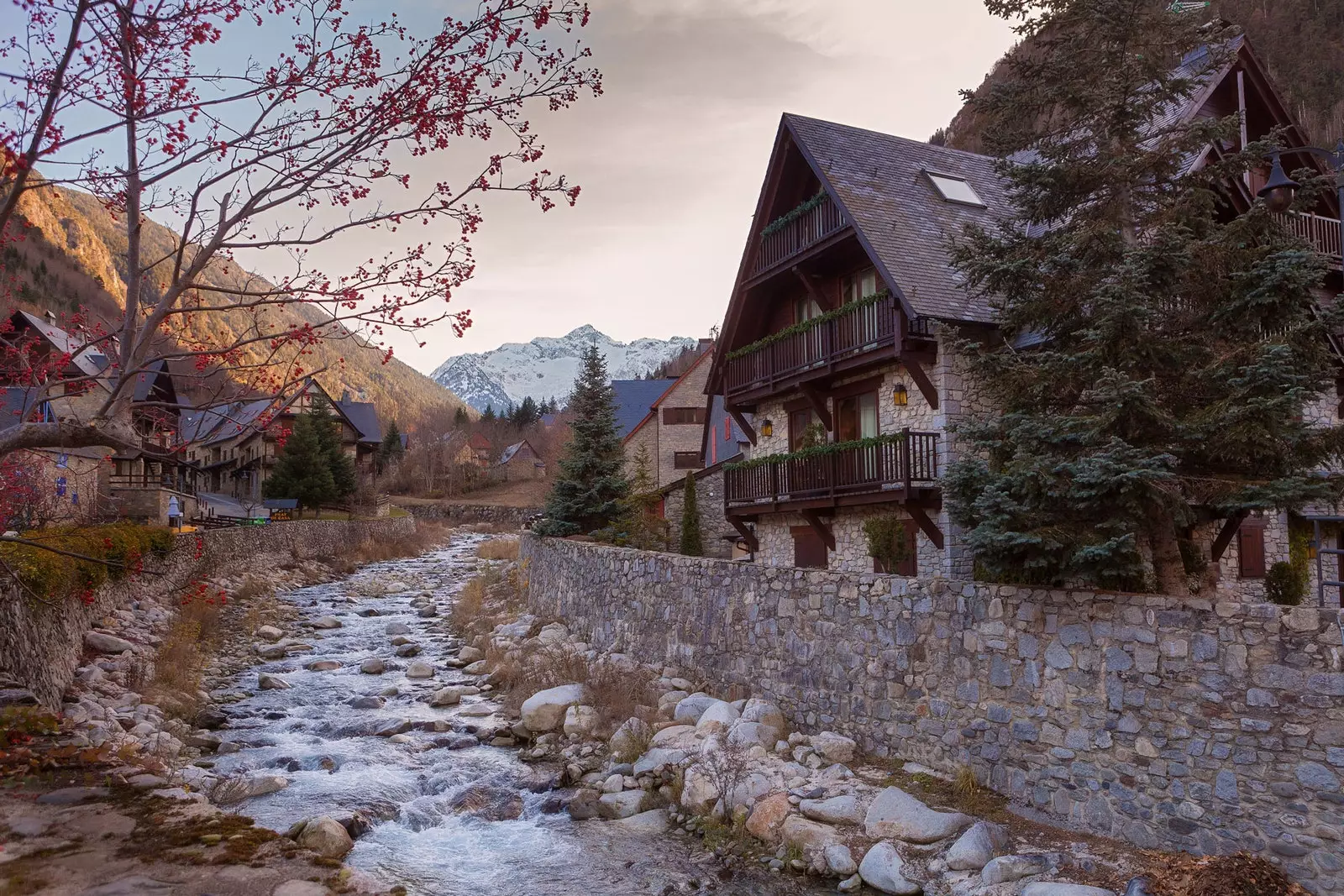
The picturesque town of Arties
For those who wish an alternative to alpine skiing , the queues for the chairlifts and the congestion on the slopes, a more than appealing option is to take the Carros de Foq circuit, which joins the shelters present in the Aiguas Tortas National Park and San Mauricio Lake.
Reserved only for expert mountaineers, the crossing can be done with snowshoes or touring skis over six days in which the most iconic refuges of the Catalan Pyrenees are visited, such as Suction cup and Callvell (2,220m) , tasted (2,310m) and Colomers (2,100m).
This last refuge, located in the glacial cirque of the same name, can be reached from the Banhs de Tredòs Spa Hotel, 9km from Salardú , which offers snowmobile excursions and the services of its thermal spa, the highest in the Pyrenees, in addition to a juicy housing offer in the middle of nature.
If the weather is not good, and the option is to stay at the lowest levels, Vielha, the capital of the valley, offers a variety of leisure activities at the height of the biggest fans of the mountain. The specialized stores are among the best in the peninsula, and the beautiful town , crossed by the river Nere, is a succession of traditional stone houses and modern buildings which, as in the whole valley, have known how to respect traditional Aranese architecture.
There are plenty of slate roofs, well-cared wooden facades and cozy places where you can shelter from the cold. One of them is Oh La La! Crepes (Carrer Cuért, next to Carrer Major), which offers the most illustrious of French desserts in a homey place where the family atmosphere prevails , and that will surely restore our tired muscles after a long day of snow.
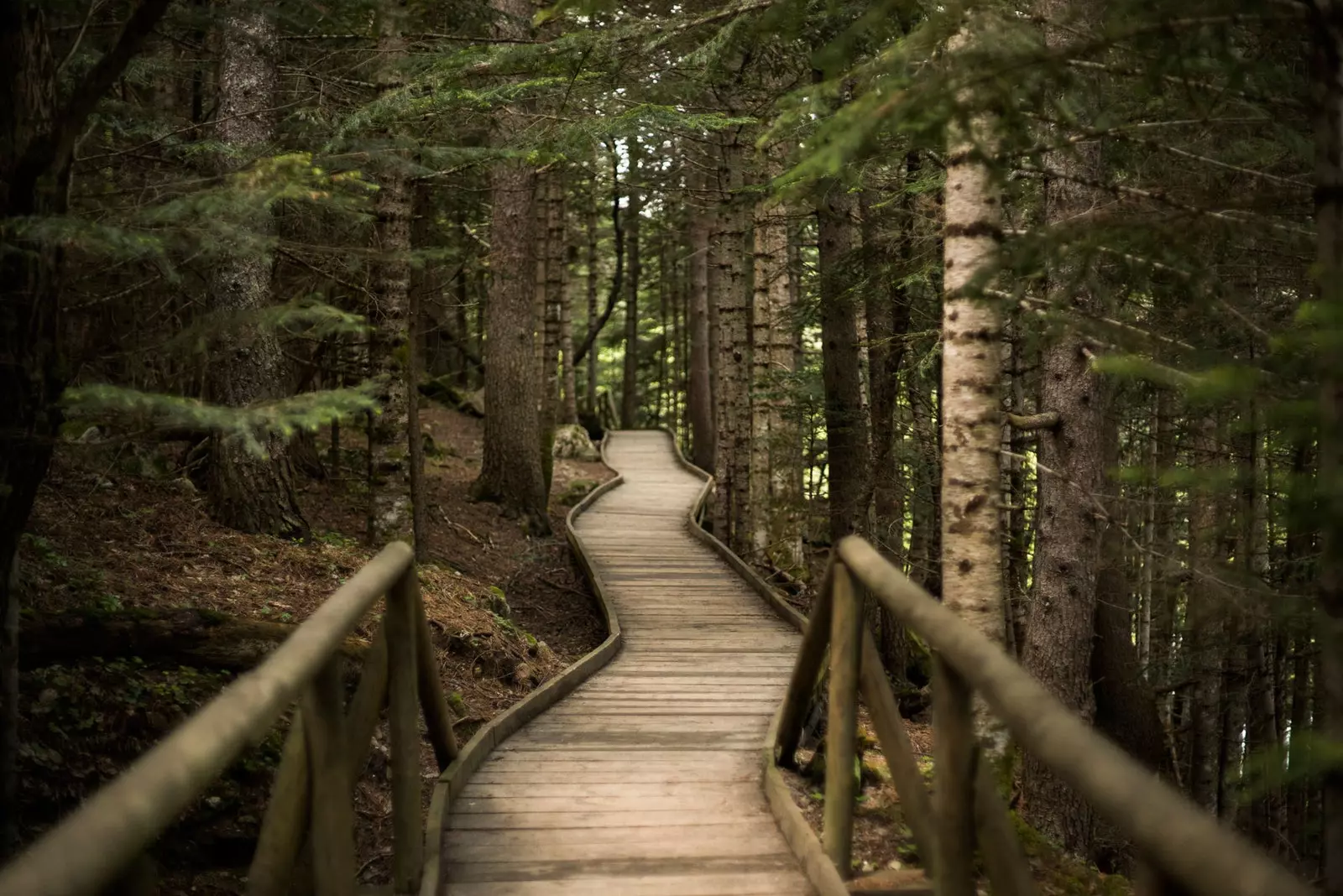
The Aiguas Tortas National Park
ART AND GASTRONOMY ALONG THE GARONNE
The Valle de Arán and its particular idiosyncrasies show the Hispanic influence through the Bonaigua port (2,072m), which connects the valley with the peninsula through a winding path surrounded by snow for six months of the year. Before the existence of the highway, and of the more modern Vielha tunnel, the Arán Valley received a single exit to the outside through France.
the garonne river , the most important in the French South, rises on the slopes of Baqueira, and it shapes the valley in its impetuous race towards the Atlantic. Through the river, we can find the cultural influences that this "water highway" has brought, over time, to this remote alpine valley.
Its towns, built on cliffs and hills that fall into the current, keep inside an architecture similar to what we can see in the Alps , and what they have found in the tasty Garonne trout the best banner of a gastronomic offer open to all types of palates.
Our gastro-artistic visit can start in Salardú, in front of the Romanesque church of San Andrés , which watches over the road to France from the port of Bonaigua. For centuries, the ecclesiastical communities of the valley obeyed the French diocese of Cominges, which provided notable artists to a small valley capable of developing its own building style: Aranese Romanesque.
The wide basilicas with three naves, such as the one in Saint Andrew, or Saint Mary of Artíes , transport us to the wide valleys of Lombardy, but without forgetting us, thanks to the beautiful crismones and the rich iconography present on its covers, that we find very close to the neighboring Aragonese and Catalan Romanesque
However, the Aranese artists themselves would demonstrate their independence by carving a series of wooden Christs like the one we can see in the church of San Andrés de Salardú, and that reflect the survival of the ancestral customs that governed the valley before the arrival of Christianity.
Are crude, unbalanced and unrealistic sculptures , created by hands that only found time for art during the harsh winter months, when their flocks rested in the stables.
While on the other side of the mountains, Romanesque Europe debated the correct use of religious images , the valley of Arán, a corner spiritually focused on the skies of the mountains, traced its own path.
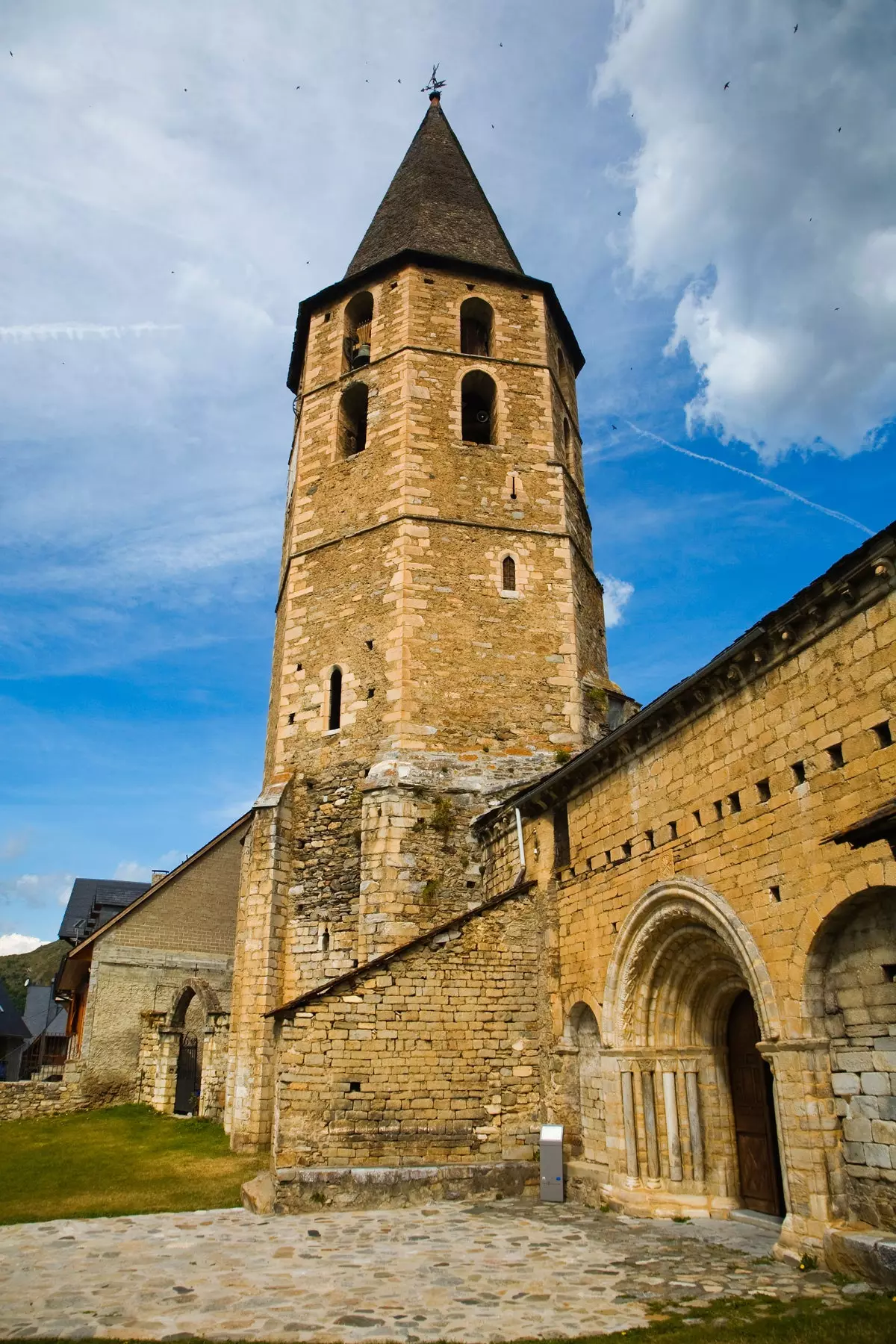
The Romanesque church of San Andrés
The children of those shepherds who populated the Garonne basin live mostly from the benefits of the mountain tourism, both in winter and summer. However, there is still an important population in the valley that performs the traditional herding tasks , and that provide the Aranese restaurants with an exceptional raw material.
A good example of it can be found in Salardú, in the Eth Wine Cooler Gray (Plaça Major, 20), where Tay and Pilar offer one of the most famous Aranese pots in the valley. Opposite, the tavern La Salve gives off the characteristic smell of grilled meat , accompanied by cheeses from the only artisan cheese factory in the valley, Hormatgues Tarrau.
If what you are looking for is signature cuisine, the destination must be Artiés , famous for its unique parador and its leisure offer. Venues such as ** Urtau ** whet your appetite with a succulent range of pinchos, while emblems of traditional cuisine such as ** Casa Irene or Casuca de Artiés ** will offer us the best of mountain cuisine. On the other hand, ** Biniarán **, very close to the church of Santa María, offers a signature touch to the offer of a town famous for its winter atmosphere until the wee hours of the morning.
If skiing is the least important thing, and the dawn surprises us walking through the cobbled streets of Artiés, it is worth stopping and contemplating the watchful figure of Montarto, sentinel of the Aranese night , silhouetted against the dawn.
It is the same silhouette that those exiled republicans who undertook Operation Reconquest must have seen, and in 1944, they were stopped on the outskirts of Salardú, discouraged to see that the popular reaction in the valley had been much more lukewarm than expected.
Even in years as convulsive as those, and whose echoes still resonate between the waterfalls and the towers of the churches, the Arán Valley refuses to fall into the problems of the “outside world”.
Insurance of your own identity, offers a haven of peace for anyone seeking refuge and fresh air , preserving secrets still unknown to tourists, and waiting to be brought to light by some traveler with the soul of a revolutionary, and wanting to isolate themselves from the noise between the trunks of the fir trees.
